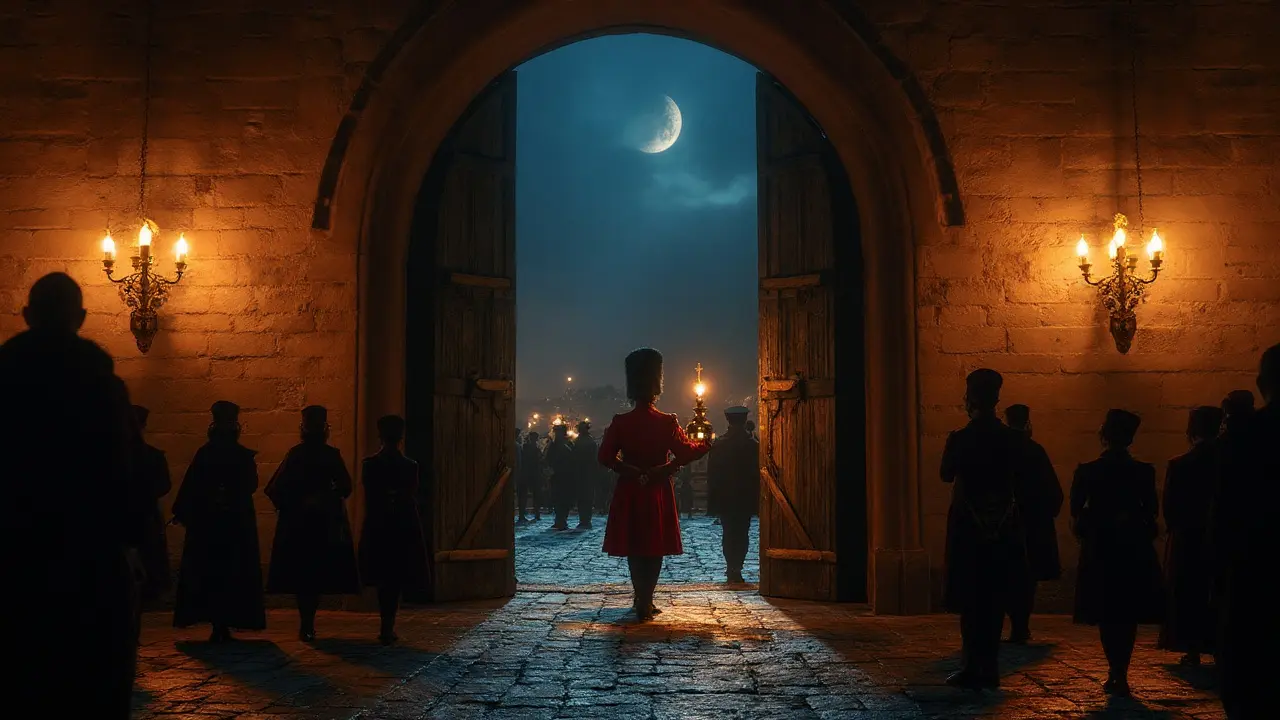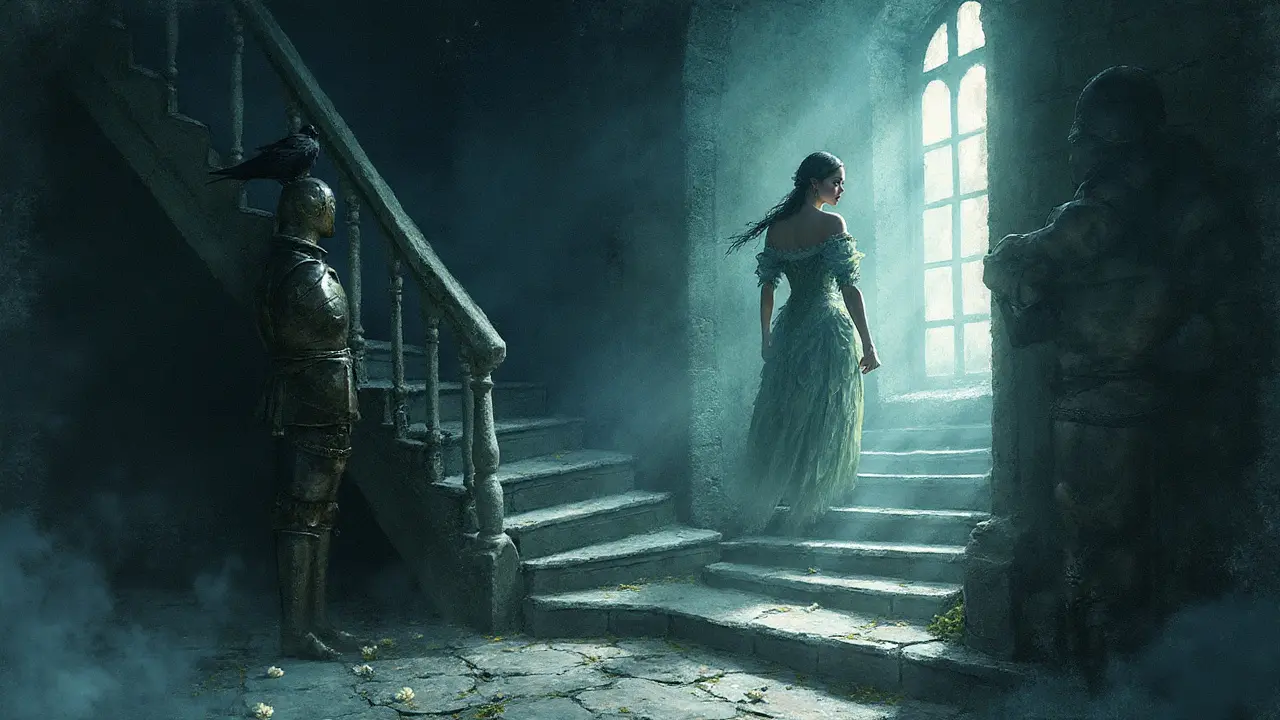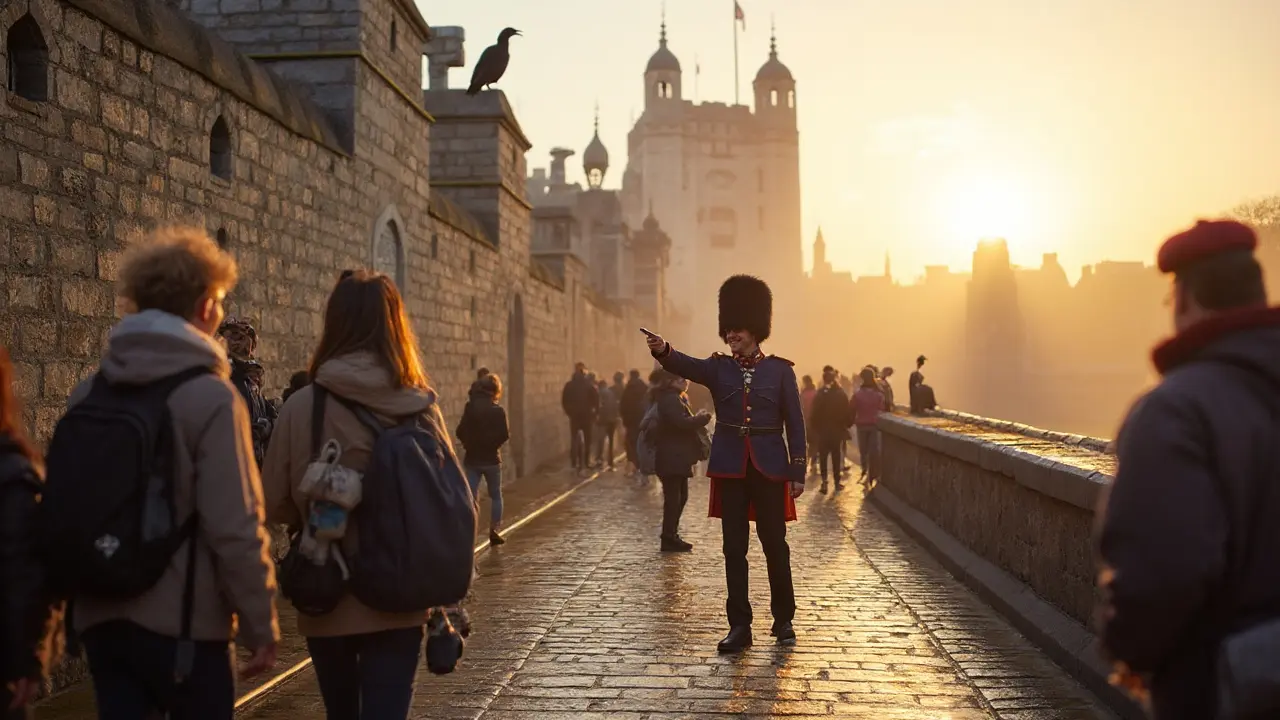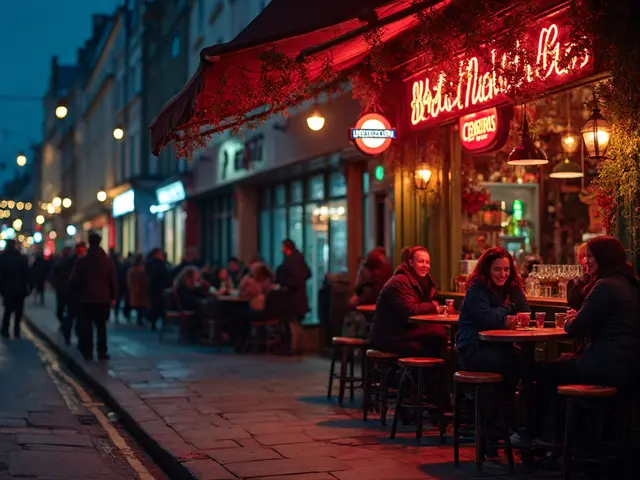If you live in London or you’re planning a weekend in the city, you already know the skyline’s big hitters: Tower Bridge, St Paul’s, the Shard. But the most unsettling of the London attractions sits squat on the river, built to intimidate and still doing the job. The Tower of London isn’t a fairy‑tale castle. It’s a power machine with a memory. This guide gives you the short version first, then the deeper story, and finally a practical plan to see it right-without wasting time in queues or missing the weirdly moving moments, like the nightly lock-up that still happens every single evening.
- TL;DR: A fortress, palace, prison, mint, menagerie-this place powered the English state for 1,000 years and kept receipts.
- Best visit hack in London: arrive for the first entry, hit Crown Jewels first, then the Yeoman Warder tour.
- Want chills? Look for the quiet chapel where Anne Boleyn is buried; stay late for the Ceremony of the Keys if you can bag a ticket.
- Don’t buy torture myths wholesale: far fewer victims than legend says, but espionage and wartime executions are very real.
- Pair it with a Thames clipper ride, St Katharine Docks, and a riverside pub in Wapping if you want a full, London-local kind of day.
The Tower’s Dark Story: Power, Intrigue, and the Myths We Love
The Tower began as a threat. William the Conqueror planted the White Tower by the Thames to cow a restless city. From there, monarchs added walls and murder-holes as easily as we add extensions to a semi. But beyond the stone, the psychology mattered: this was the crown’s filing cabinet, bank vault, and panic room rolled into one. Londoners knew it. Foreign envoys felt it.
For centuries, the Tower has been where the state did its messiest work. Records held at Historic Royal Palaces and the National Archives show it as royal residence and arsenal, then mint and prison, then symbol and museum. The mix changes with the century, but the aim-control-doesn’t.
Tudor drama is the headliner because Tudor drama always is. Anne Boleyn’s trial and execution (1536) is the story people come for, but the quiet details land harder when you’re on-site: the stones of the Chapel Royal of St Peter ad Vincula hold the graves of Anne, Catherine Howard, and Lady Jane Grey. “The princes in the Tower” (Edward V and Richard, Duke of York) vanish into the record in 1483; bones found at the Tower in 1674 were later laid in Westminster Abbey, but historians still argue the case. That uncertainty is part of why the place stays lodged in London’s head.
Torture? It happened, but not on the industrial scale of pop culture. Instruments like the rack and the Scavenger’s Daughter were used in the 16th century, most infamously on religious and political suspects. The Bloody Tower’s name helps the myth along; the surviving documentation reins it in. If you’re telling this to kids, pitch it as what it was: targeted intimidation, not a medieval theme park of pain.
Don’t skip the Tower’s other lives. For 500 years, the Royal Mint struck coins here; the Royal Mint Museum and the National Archives back up the stories of counterfeiters and quality control that would make any modern start-up sweat. There was also a royal menagerie-lions and a polar bear, no less-that left behind some cracking City gossip and a few museum cases of oddities. Later, the Tower’s prison chapter winds through the Gunpowder Plot aftermath and straight into the 20th century. During both World Wars, spies faced courts-martial and firing squads on site; Josef Jakobs was the last person executed here, in 1941.
So yes, ghosts have plenty to work with. But you’ll find the rawest feeling not in a dark corner but in daylight, in the drilled routine of Yeoman Warders, the flight of ravens patrolling the grass, and the slightly absurd majesty of the Crown Jewels displayed steps away from places where the crown once broke people to keep itself intact.
| Period | What the Tower Did | Names/Events You’ll Recognise | Why It Matters |
|---|---|---|---|
| 11th-12th c. | Norman fortress; royal residence | William I builds White Tower | Military dominance over a stubborn London |
| 13th-14th c. | Expanded defenses; state prison | Edward I’s curtain walls; baronial conflicts | Becomes the state’s lockbox for people and power |
| 15th c. | Wars of the Roses intrigue | Princes in the Tower (1483) | Enduring mystery fuels the Tower’s haunted lore |
| 16th c. (Tudor) | Prison, torture, high-profile executions | Anne Boleyn, Lady Jane Grey, Thomas More | The crown enforces religious and political control |
| 17th-18th c. | Royal Mint; menagerie; arsenal | Sir Isaac Newton at the Mint; Gunpowder Plot aftermath | Birth of Britain’s monetary credibility |
| 19th c. | Tourism rises; reform of prison system | Romanticism and conservation | From terror site to heritage magnet |
| 20th c. | Wartime prison and executions | WWI/WWII spies; 1941 last execution | Modern state power in a medieval shell |
| 21st c. | World Heritage Site; living traditions | Ceremony of the Keys; public exhibitions | Heritage meets civic ritual and tourism |
Sources worth your time: Historic Royal Palaces’ official records, the National Archives (for trials and warrants), Royal Mint Museum (on coinage and counterfeiting), and “The Ravenmaster” by Christopher Skaife for a first-person look at the birds and the daily rhythm inside the walls.

Plan Your Visit in London: Routes, Rituals, and Londoner-Level Tips
London rewards you when you time things well. The Tower is no exception. Aim for first entry on a weekday outside school holidays if you can. If you must go in August or at half-term, go early or late and keep the plan tight.
Getting there: Tower Hill on the District/Circle lines is the simple move; Tower Gateway DLR works if you’re coming from Canary Wharf or City Airport. The Thames Clippers (Uber Boat by Thames Clippers) turn it into a mini-sightseeing cruise-handy from Greenwich, Westminster, or Battersea if you want the view baked in. Cycling? Dock a Santander bike at Tower Gardens or Minories and walk the last bit to avoid fighting traffic around Tower Bridge. If you’re mixing errands in the City, Monument and Bank are a 10-15 minute walk.
Tickets: Buying online in advance usually saves a few quid and, more importantly, time. Expect dynamic pricing-peak weekends and school holidays cost more than a cold Tuesday in January. If you’ve got a National Art Pass, check the small print; the London Pass includes the Tower, but run the numbers against your itinerary so you’re not paying for an unneeded bundle. The Ceremony of the Keys is booked separately with a small booking fee and limited nightly spaces, so treat it like a gig ticket-set an alert and move fast.
What to see, in an order that dodges the biggest crush:
- Crown Jewels first. Straight there on entry. The moving walkway helps, but queues build fast and snake outside on busy days.
- Join a Yeoman Warder (Beefeater) tour. They kick off regularly from the gate; the delivery is theatre, history, and gallows humour in one dose. If you’ve got kids, this is the hook.
- White Tower. Four floors of armour, weapons, and a sense that the stairs were not built for your knees. The tilt of the timber, the smell of old stone-it gets under your skin.
- Medieval Palace and Wall Walk. Reconstructed rooms and riverside views. You’ll get a feel for how close the court lived to danger.
- Bloody Tower and the Princes story. Read the text, then step outside and look at the line of the wall. You’ll feel the claustrophobia.
- Chapel Royal of St Peter ad Vincula. It’s calm and very human. Pay attention to the floor plaques.
- Ravens and the Ravenmaster’s patch. Don’t feed, don’t touch, do watch. The birds behave like they own the joint because, frankly, they do.
How long you need: 2.5 hours for a lean visit; 4 hours if you want everything without rushing. Families should plan snack and loo breaks between major stops; there are cafés on-site, plus easy nearby options at St Katharine Docks if you want to sit by the boats and split a pizza or grab sushi.
Accessibility and practical stuff: Lifts exist in some towers, but many medieval stairs are narrow and uneven. Buggies are fine but awkward on the spiral steps; a sling makes life easier with babies. The site security is airport-style-keep liquids and backpacks sensible to avoid delays. Photos are fine almost everywhere, but not in the Crown Jewels. The Yeoman Warders live on-site; you’ll see washing lines if you look. It’s a working community, not just a backdrop.
Best times and honest trade-offs:
- Early morning: quietest Crown Jewels, best light on the stone. You’ll feel the City waking around you.
- Late afternoon: fewer school groups, softer crowds. Risk: you may rush the last towers.
- Winter weekdays: eerie atmosphere, better for reflection. Shorter hours and colder wind off the Thames-bring layers and a scarf.
- Bank holidays and summer Saturdays: lively, but queues get real. Book everything in advance and accept a slower pace.
Ritual watch: the Ceremony of the Keys happens nightly, roughly at 9:53 pm. It’s short, precise, and oddly affecting-London’s oldest military ceremony still done by hand. You’ll gather, hear the steps on the cobbles, and watch the gates lock. There’s no acting here; it’s the end of the working day. You need to book; spots go months ahead. Worth it? Yes, if ritual does it for you. If not, you can still feel its echo in the place, especially at twilight when the City’s offices glow beyond the walls.
Nearby pairings locals actually do:
- St Katharine Docks for a quieter, marina feel; The Dickens Inn for a touristy pint, or a coffee right on the quayside.
- Walk round to Wapping High Street and the Prospect of Whitby for London river history and no-nonsense pub vibes.
- Sky Garden free-view slot for sunset over the City-book in advance. It’s a 10-15 minute walk.
- Thames Path east towards Limehouse for a calmer river walk; west to London Bridge for Borough Market if you’re building a full day.
| Experience | Best For | Trade-offs | Notes (2025) |
|---|---|---|---|
| Daytime visit | First-timers, families | Queues at Crown Jewels in peak hours | Advance booking recommended; dynamic pricing by date |
| Yeoman Warder tour | Story-lovers, teens | Fixed times; can be busy | Free with entry; check schedule at the gate |
| Ceremony of the Keys | Night owls, ritual fans | Very limited tickets; late finish | Nominal booking fee; book months ahead |
| River arrival (Clippers) | Scenic types, kids | Weather dependent on deck | Contactless/Oyster works; off-peak is calmer |
Quick checklist to make it smooth:
- Book early entry; set a reminder for Ceremony of the Keys if that’s a must.
- Arrive 10 minutes before rope drop; go Crown Jewels first, then tour.
- Pack light; medieval stairs and big rucksacks are not friends.
- Plan a 30-minute break at St Katharine Docks if you’re with kids.
- For photos, shoot across the moat at golden hour; Tower Bridge as your frame.

Ghosts, Ravens, and What’s Real: Sorting Stories from Evidence
London does ghosts with a straight face. The Tower’s roster is crowded: Anne Boleyn drifting near the chapel; Margaret Pole’s brutal execution echoing in the ground; a phantom bear spooking a guard; a “White Lady” over the ramparts. Do you have to believe? No. But being an adult about it-open to mood, clear on facts-helps you enjoy the place without rolling your eyes or scaring the kids.
What the records back up: the executions and burials. The chapel’s ledger is hard, verifiable truth. The princes’ fate is the unsolved box; the bones found in 1674 and reinterred in Westminster Abbey were examined in the 1930s and again in the 21st century with less-than-final scientific certainty. Accounts from warders and visitors about apparitions are anecdotal-memorable, not conclusive. If you want the vibe, go in winter light or just after sunset when the City’s glass towers turn the moat navy blue.
About those ravens. The line you’ll hear is that if the ravens ever leave, the kingdom will fall. Tradition, not statute. Still, the birds are kept with care and a touch of celebrity. The Ravenmaster-yes, it’s a real job-feeds and trains them. They roam the grass, hold grudges, and pose for photos when they feel like it. Their names are public and change as the group changes; at least six are kept on site by custom, usually more. It’s part of the show, but also the heartbeat of a lived-in fortress. If you bring kids, make this one of your “spot-the-raven” moments; it’s gentler than the ghost talk and more real.
Evidence-minded tips:
- Read labels in the Bloody Tower slowly-note the qualifier words on torture displays.
- In the White Tower, check the dates and context around armour and weapons; it’s not just shiny metal, it’s propaganda.
- At the Crown Jewels, focus on the state function. Think of the jewels as working tools of ceremony rather than treasure in a pirate chest.
- In the chapel, stand still for a minute. London noise fades and the place explains itself.
Mini‑FAQ:
- Is the Tower good for kids? Yes-mix a Warder tour, Crown Jewels, and ravens, break for snacks, and avoid every spiral staircase you don’t need.
- Are there real ghosts? Depends on your threshold. The stories are strong; the documents are stronger. Go for the mood, stay for the history.
- Can you see the Ceremony of the Keys on a whim? No. You must pre-book. Set a reminder a few months out.
- What’s the best photo spot? From the outer moat with the City skyline behind, or from Tower Bridge’s south-east corner looking back at the walls.
- Is it worth it if I’ve done Westminster and the British Museum? Yes. This is London’s state power in 3D. Different energy from galleries and churches.
Next steps if you want more:
- For deep dives, look up Historic Royal Palaces’ publications and the National Archives’ case files related to Tudor prisoners.
- Pair a return visit with a themed walk: City of London plague and fire routes, or a Wapping riverside loop tied to docklands crime and press gangs.
- Watch for special exhibitions-HRP rotates displays and occasionally opens spaces you don’t usually see.
Troubleshooting different scenarios:
- Rain incoming: Do Crown Jewels and White Tower during the worst of it, save ramparts and the wall walk for gaps between showers. Bring a compact brolly; the wind by the Thames will test flimsy ones.
- Only 90 minutes free: Crown Jewels, quick Warder intro if one is starting, then the chapel. That’s the distilled essence.
- Mobility considerations: Prioritise the Crown Jewels building and ground-level exhibits. Ask staff for lift access points; they’re helpful and used to it.
- Peak crowds and restless kids: Do a raven hunt, then a snack, then White Tower in short bursts. Keep moving; don’t try to “finish” every label.
- Budget tight: Book off-peak, use contactless daily caps on TfL, and picnic at the moat edge before or after your slot. Free add-on: walk the river to the Monument and pop into the Sky Garden if you booked a free slot.
I live for the moments London shows you its working parts. The Tower isn’t nostalgia; it’s the engine room where fear and ceremony kept the crown alive. You feel that energy on a cold morning as the keys turn, or when a raven hops in front of your shoes like it owns your day. If you’re in the city, make time for it. Do it early, do it smart, and let the stones tell their story without shouting over them.





